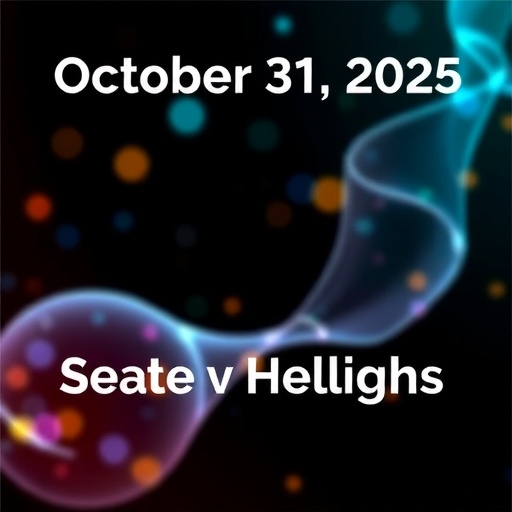In a groundbreaking study emerging from Tianjin First Central Hospital, researchers have shed new light on the complex interplay between acute ischemic stroke (AIS) and cancer in Chinese patients, focusing on the significant risk posed by recurrent thromboembolism, including both venous thromboembolism (VTE) and arterial thromboembolism (ATE). This real-world, retrospective analysis spanning from June 2023 to December 2024 represents a pivotal step in understanding the mechanisms and predictive factors that predispose these patients to devastating vascular complications during a critical six-month follow-up period.
Acute ischemic stroke in patients already burdened with cancer presents a unique clinical challenge, merging two pathologies that inherently heighten thrombogenic potential. This study meticulously enrolled 218 consecutive adult patients admitted with AIS who also had a concomitant cancer diagnosis, making this one of the most extensive investigations into the recurrent thromboembolic and hemorrhagic events in this dual-disease population within China. The significance of this cohort is underscored by the observed baseline prevalence of VTE, a striking 22.5% of patients, with an overwhelming majority presenting asymptomatically.
Central to this study’s innovation is the exploration of D-dimer levels as a biomarker for VTE risk stratification. Elevated D-dimer levels above 1.2 µg/mL were robustly associated with both the presence of baseline VTE and the occurrence of recurrent VTE during follow-up. The odds ratios indicated a more than threefold increased likelihood of thromboembolic events, firmly positioning D-dimer as a critical biochemical indicator for initiating screening protocols in clinical settings, even absent overt symptoms of thrombosis.
Beyond biochemical markers, the study identified cryptogenic stroke subtype as a significant independent predictor of baseline VTE, with affected patients exhibiting almost threefold increased odds of having underlying venous thromboembolism. This finding invites a deeper mechanistic inquiry into the pathophysiology linking unexplained stroke etiology to hypercoagulable states in cancer patients, potentially guiding new diagnostic algorithms and tailored therapeutic interventions.
Recurrent stroke emerged as a formidable complication during the observation period, affecting nearly one-third of the patients. Notably, cancer metastasis surfaced as the strongest clinical predictor for recurrent stroke, amplifying the risk threefold. This finding emphasizes the pervasive influence of systemic malignancy progression on cerebral vascular stability and suggests that metastatic burden should be factored into individual prognostic evaluations and management strategies.
The study also cast light on the inherent risks associated with anticoagulation therapy in this vulnerable group. Although anticoagulants are a cornerstone in preventing thromboembolic events, their use was linked to a substantially elevated bleeding risk, with nearly a tenfold increase. This delicate balance between preventing vascular occlusion and avoiding hemorrhagic complications underscores the urgent need for precision medicine approaches that optimize therapeutic windows for stroke patients with cancer.
Intriguingly, the research highlights the high prevalence of asymptomatic VTE at baseline, suggesting that standard clinical assessments may underestimate the thrombotic burden in this population. This revelation advocates for routine, perhaps protocolized, screening for VTE in AIS patients with cancer, especially leveraging D-dimer quantification as a non-invasive, cost-effective initial step.
The multifaceted nature of thromboembolism in cancer patients with AIS calls for an integrated clinical model that addresses shared risk factors, tumor biology, coagulation abnormalities, and the unique vascular vulnerabilities conferred by both diseases. The identification of distinct predictors paves the way for developing algorithms that could stratify patients into risk categories, thereby refining surveillance intensity and therapeutic regimens.
Further, this study underscores the importance of individualized risk assessment in managing AIS patients with cancer. The interplay between tumor metastasis and stroke recurrence alerts clinicians to the potential need for more aggressive cancer control strategies to mitigate cerebrovascular risks. Similarly, the relationship between D-dimer levels and recurrent thromboembolic events highlights a tangible, actionable biomarker for clinical decision-making.
Given the study’s observational design, it naturally raises questions about causality and the biological underpinnings driving these associations. However, its comprehensive data collection and robust multivariable logistic regression analyses strengthen the validity of its conclusions and provide a critical foundation for future interventional studies.
Moreover, the study’s revelation that anticoagulant therapy substantially increases bleeding risk in this population mandates cautious therapeutic planning, perhaps incorporating patient-specific bleeding risk profiles, pharmacogenetics, and novel anticoagulants with safer profiles. This dimension of care is especially pertinent in oncology patients where thromboprophylaxis must be balanced against cancer-related thrombocytopenia and vessel fragility.
The implications of these findings reach beyond clinical management; they call for enhanced interdisciplinary collaboration among oncologists, neurologists, and hematologists to optimize care pathways. Integrating cancer staging, stroke classification, and laboratory biomarkers may refine existing clinical guidelines and improve outcomes for this high-risk cohort.
Ultimately, this real-world study from a large Chinese cohort not only enriches the global understanding of thromboembolism in AIS patients with malignancy but also raises awareness about the silent, often overlooked burden of venous thromboembolism at presentation. Its recommendations advocate for heightened vigilance, early biomarker-guided screening, and thoughtful therapeutic tailoring as cornerstones of improved patient care.
In conclusion, the elucidation of D-dimer’s pivotal role, the impact of cryptogenic stroke on baseline VTE risk, the prognostic significance of cancer metastasis in recurrent strokes, and the hemorrhagic hazards linked to anticoagulant therapy collectively represent a landmark in stroke-oncology research. These insights offer a roadmap toward precision diagnostics and personalized medicine in a domain that demands urgent clinical prioritization to reduce morbidity and mortality.
This landmark study’s findings could catalyze transformative changes in stroke unit protocols in oncology settings worldwide, prompting revisions in screening strategies and fostering novel clinical trials aimed at balancing thromboembolism prevention with bleeding risk management. As such, it represents a crucial step forward in unraveling the complex thrombotic landscape at the intersection of acute ischemic stroke and active malignancy.
Subject of Research:
The study investigates the incidence and risk factors for recurrent venous thromboembolism, recurrent stroke, and bleeding in Chinese patients suffering from acute ischemic stroke and concomitant cancer.
Article Title:
Incidence and risk factors for recurrent venous thromboembolism, recurrent stroke and bleeding in Chinese patients with acute ischemic stroke and cancer: a real-world study.
Article References:
Zhang, Y., Wang, Hy., Ren, Hx. et al. Incidence and risk factors for recurrent venous thromboembolism, recurrent stroke and bleeding in Chinese patients with acute ischemic stroke and cancer: a real-world study. BMC Cancer 25, 1675 (2025). https://doi.org/10.1186/s12885-025-15139-z
Image Credits: Scienmag.com
DOI:
https://doi.org/10.1186/s12885-025-15139-z
Keywords:
Acute ischemic stroke, cancer, venous thromboembolism, recurrent stroke, bleeding risk, D-dimer, cryptogenic stroke, cancer metastasis, anticoagulant therapy, risk factors, thromboembolism screening
Tags: acute ischemic stroke risk factorsarterial thromboembolism in ischemic strokebleeding complications in cancer patientscancer and stroke comorbidityclinical challenges in dual disease managementD-dimer levels and VTE correlationpredictive factors for vascular complicationsrecurrent thromboembolism in cancer patientsretrospective analysis of thromboembolic eventsthrombotic risk in cancer patientsTianjin First Central Hospital research findingsvenous thromboembolism prevalence in cancer





